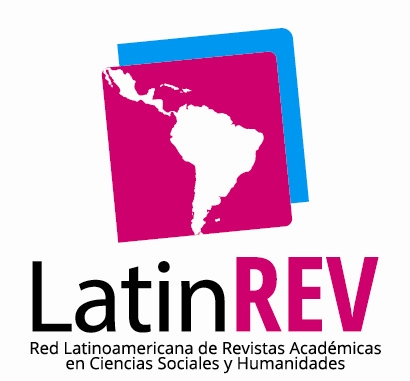Excessive use of social networks in adolescents aged 10 to 14, a latent risk of the new era
DOI:
https://doi.org/10.35622/j.rep.2021.01.003Keywords:
Control, interaction, social networks, risks, useAbstract
Scientific advances that are emerging over time have managed to permeate in a broader way, allowing them to access them more and more easily and comfortably, since obtaining and appropriating them will allow them or facilitate their relationship with the world around them. Therefore, it is necessary to understand the meanings of the excessive use of social networks in adolescents between 10 and 14 years of age, from the Municipality of Cajicá, Cundinamarca. Through an investigation with qualitative methodology under the data analysis technique called hermeneutics, focused on Vygotsky’s sociocultural, applying an in-depth interview in a sample of 21 adolescents. Through which society is identified, the theory variety of concepts that the interviewees manifest about the acquisition, use, management and risks of social networks, which although they manage them, they recognize that there are many aspects to improve. Therefore, it is important to create different projects and intervention programs that reduce the risks and therefore the consequences of the excessive and inappropriate use of social networks.
Estadísticas del Artículo
References
Arias, O., Gallego, V., Rodríguez, M. J., & Del Pozo, M. A. (2012). Adicción a las nuevas tecnologías. Psicología de las Adicciones, 1, 2-6.
Bautista, N. P. (2011). Proceso de la investigacion cualitativa, Epistemologia, metodologia y aplicaciones. Bogotá: Manual Moderno.
Bernal, C., & Angulo, F. (2013). Interacciones de los jóvenes andaluces en las redes sociales. Revista Comunicar 40: Jóvenes interactivos, (20). Obtenido de https://www.revistacomunicar.com/indice/articulo.php?numero=40-2013-04
Bisquerra, R. (2008). Educación para la ciudadanía y convivencia, El enfoque de la Educación Emocional. Madrid: Wolters Kluwer.
Borras, T. (2014). Adolescencia: definicion, vulnerabilidad y oportunidad. Correo Científico Médico de Holguín, 18 (1), 5-7.
Campos, F. (2008). Las redes sociales trastocan los modelos de los medios de comunicación tradicionales. Revista Latina de Comunicación Social, 11 (63), 277 - 286.
Carballo, J. (06 de julio de 2016). La ONU declara el acceso a Internet como un derecho humano.
Del Barrio, A., & Ruiz, I. (2014). Los adolescentes y el uso de las redes sociales. INFAD Revista de Psicología, 1 (3), 571-576.
Díaz, V. (2011). Mitos y realidades de las redes sociales. Información y comunicación en la Sociedad de la Información. Prisma Social, 6, 1-26. Obtenido de https://www.redalyc.org/pdf/3537/353744578007.pdf
Echeburúa, E. (2012). Factores de riesgo y factores de protección en la adicción a las nuevas tecnologías y redes sociales en jóvenes y adolescentes. Comunicaciones Breves, 37(4), 435-447. Obtenido de https://www.aesed.com/descargas/revistas/v37n4_5.pdf
Echeburúa, E., & De Coral, P. (2010). Adicción a las nuevas tecnologías y a las redes sociales en jóvenes: un nuevo reto. Adicciones, 22 (2), 91-96.
Estevez, E., Jimenez, T., & Musitu, G. (2011). Relaciones entre padres e hijos adolescentes. Valencia: Nau Llibres.
Gaete, V. (2015). Desarrollo psicosocial del adolescente. Revista chilena de pediatria, 86(6), 436-443.
Hernández, K., Yanez, J., & Carrera, A. (2017). Las redes sociales y adolescencias. Repercusión en la actividad física. Universidad y Sociedad, 9(2), 242-247. Obtenido de http://scielo.sld.cu/pdf/rus/v9n2/rus33217.pdf
Hütt, H. (2012). Las redes sociales: una nueva herramienta de difusión social networks: a new diffusion tools. Revista Reflexiones 91 (2), 121-128.
Martínez, F. S. (2019). la teoria sociocultural de Vygotsky. Lifeder.com.
Patiño, L. (2020). Revisión Sistemática de Literatura: La influencia de las redes sociales sobre las relaciones interpersonales en los adolescentes. Bucaramanga : Universidad Cooperativa de Colombia.
Salas, A. L. (2001). Implicaciones educativas de la teoria sosciocultural de Vygotsky. Revista Educacion, 25 (2), 59-65.
Taylor, S., & Bogdan, R. (1987). Introducción a los métodos cualitativos de investigación: La búsqueda de significados. Paidós Básica.
Published
Issue
Section
License
Copyright (c) 2021 Zaida Rodado, Leydi Jurado, Sandra Giraldo (Autor/a)

This work is licensed under a Creative Commons Attribution 4.0 International License.
La Revista Estudios Psicológicos del Instituto Universitario de Innovación Ciencia y Tecnología Inudi Perú está sobre una licencia internacional Creative Commons Atribución 4.0. Lo que permite que los archivos sean de libre acceso y distribuidos libremente.
LOS AUTORES RETIENEN SUS DERECHOS:
- Los autores retienen sus derechos de marca y patente, y tambien sobre cualquier proceso o procedimiento descrito en el artículo.
- Los autores retienen el derecho de compartir, copiar, distribuir, ejecutar y comunicar públicamente el artículo publicado en la Revista Estudios Psicológicos (por ejemplo, colocarlo en un repositorio institucional o publicarlo en un libro), con un reconocimiento de su publicación inicial.
- Los autores retienen el derecho a hacer una posterior publicación de su trabajo, de utilizar el artículo o cualquier parte de aquel (por ejemplo: una compilación de sus trabajos, notas para conferencias, tesis, o para un libro), siempre que indiquen la fuente de publicación (autores del trabajo, revista, volumen, número y fecha).



















